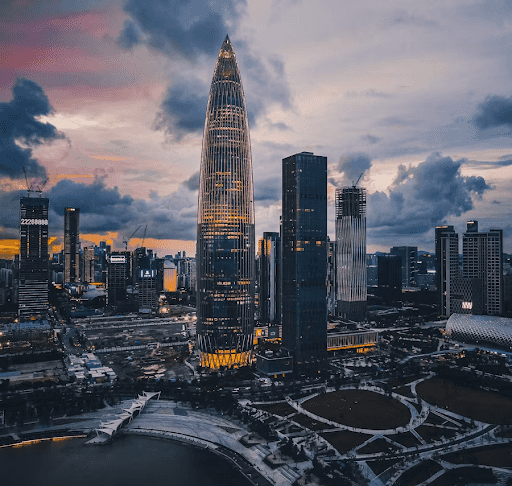Overview
The Qianhai Smart City Project in Shenzhen is a high-tech urban development initiative aimed at transforming the district into a global hub for digital governance, AI-driven services, and sustainable urban living. Positioned as a key economic and technological corridor, Qianhai leverages 5G networks, AI, IoT, and blockchain to create an integrated smart urban ecosystem. The project also serves as a testbed for cross-border collaboration between Shenzhen and Hong Kong, fostering innovation in finance, trade, and urban management.
Goals and Aspirations
Digital Governance & Smart Services - Establish a fully digitized government service system to streamline administrative processes and improve public service efficiency. AI & Big Data Integration - Implement AI and big data analytics to enhance urban management, including traffic optimization, environmental monitoring, and public security Green & Sustainable Urban Development - Develop a low-carbon, smart energy infrastructure with IoT-enabled environmental monitoring and smart grid integration
Key Characteristics
Development. Qianhai integrates smart infrastructure with advanced cloud computing, AI, and blockchain to create a highly connected and efficient urban environment.
Engagement. The project incorporates feedback loops with businesses and residents through a digital citizen engagement platform, ensuring that public concerns are addressed in planning and execution.
Implementation. A phased development strategy is used, focusing first on high-priority infrastructure such as 5G networks, AI-driven governance platforms, and smart transportation systems.
Stakeholders
Shenzhen Qianhai Authority. The primary government entity driving the smart city development.
Tencent & Huawei. Key technology partners providing cloud computing, AI, and IoT solutions.
Hong Kong-Shenzhen Collaboration. Facilitates cross-border smart services and financial innovations.
Local Residents & Businesses. Direct beneficiaries and contributors to the smart city ecosystem.
Urban Tech Research Institutions. Universities and think tanks conducting studies on smart urbanization.
Technology Interventions
AI-Powered Public Services. Automating administrative tasks, improving efficiency, and offering predictive analytics for city management.
5G-Enabled Smart Mobility. Implementing autonomous vehicle corridors, AI-driven traffic signals, and real-time traffic monitoring to enhance urban mobility.
IoT-Based Environmental Monitoring. Deploying IoT sensors to track air quality, water pollution, and urban noise, enabling real-time responses to environmental issues.
Financing
Public-Private Partnerships (PPP). The government collaborates with private tech firms (e.g., Tencent, Huawei) for funding and technology integration.
Government Smart City Funds. Shenzhen’s municipal government allocates dedicated smart city investment budgets.
Foreign Investment & Hong Kong Financial Support. Given Qianhai’s role as a cross-border hub, investment from Hong Kong and international tech firms plays a significant role in financing.
Outcomes
Enhanced Government Efficiency. Faster and more transparent administrative processes through digital platforms.
Improved Traffic Management. AI-driven systems reducing congestion and optimizing public transport routes.
Sustainability & Energy Efficiency. Reduction in carbon footprint through smart grids, renewable energy integration, and green building initiatives.
Open Questions
Data Privacy & Security Concerns. How will Qianhai balance data-driven governance with individual privacy rights?
Scalability & Adaptability. Can the technologies implemented in Qianhai be expanded to other districts or cities effectively?
Cross-Border Integration. What are the challenges in harmonizing smart city policies between Shenzhen and Hong Kong?
AI Use Statement.
I used AI tools, including ChatGPT, to help write and organize this report. ChatGPT was used to summarize Shenzhen’s Smart City Plan, structure the content, and format it in Markdown. I also used AI to find relevant government documents and fact-checked the information by comparing it with official sources and news reports. Finally, I reviewed and edited everything to make sure it met the assignment requirements.
References
Primary Sources
- Shenzhen Municipal Government. (2023). Shenzhen Smart City Development Plan.
- Ministry of Housing and Urban-Rural Development of China. (2021). National Smart City Policies.
- Shenzhen Development and Reform Commission. (2022). Digital Governance and Infrastructure Report.
Secondary Sources
- Smart Cities World. (2024). Shenzhen’s Digital Transformation Journey.
- ResearchGate. (2023). Sustainable Urban Development in Shenzhen.
- European Business Magazine. (2023). The Role of Tech Giants in Smart Cities.
- The GPSC. (2023). Financing Mechanisms for Smart Cities.
